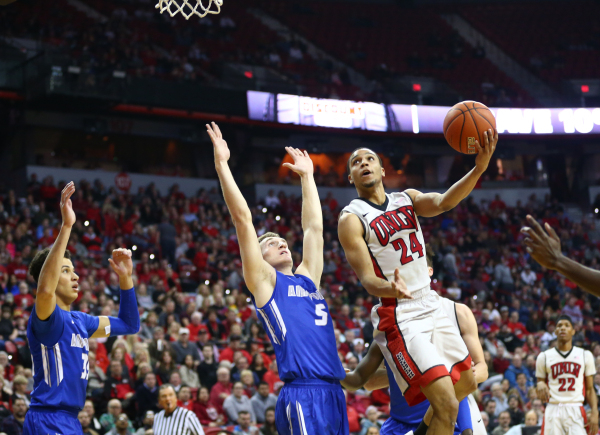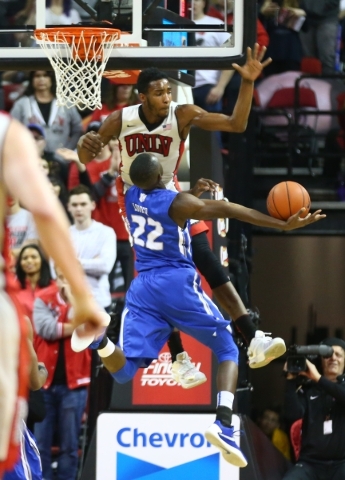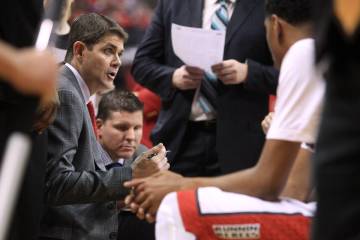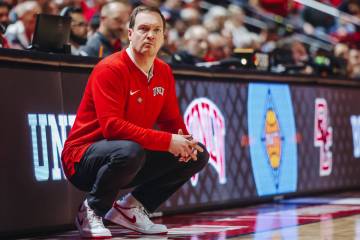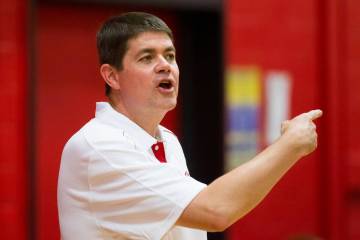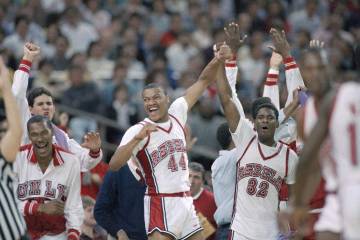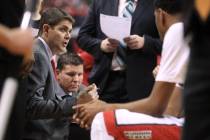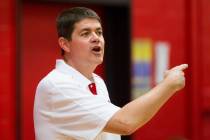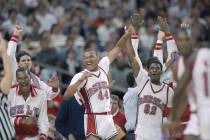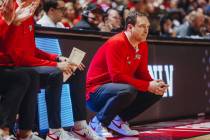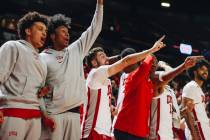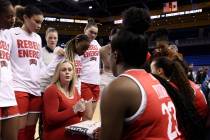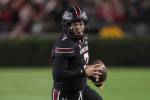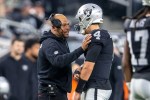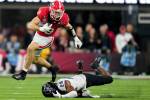Air Force still flies with faster version of Princeton offense
AIR FORCE ACADEMY, Colo. — In the halfcourt, it's the same Princeton-style offense that Air Force has run for years, an attack that has been challenging for teams to defend.
The Falcons, though, don't shy away from playing a full-court game.
They even embrace it.
Air Force's offense has evolved from the pure Princeton look that Joe Scott ran from to 2000 to 2004 to add the transition element under coach Dave Pilipovich, who is in his fourth basketball season with the Falcons.
UNLV (15-11, 6-7 Mountain West) will face that offense at 6:30 p.m. PST Tuesday at Clune Arena. The Rebels will try to stretch their winning streak to three games when they meet Air Force (12-14, 3-10) in the game that will be shown on CBS Sports Network.
"It's a little bit tricky, but we've got to play a disciplined game, and we've got to have high-level communication in transition and in the halfcourt," UNLV interim coach Todd Simon said.
Oddsmakers have established the Rebels, who won the previous meeting 100-64 a month ago in Las Vegas, as 6½-point favorites.
Like the oddsmakers, Simon doesn't expect a one-sided result Tuesday night, and he takes with him a different type of team than the one that ran all over the Falcons. Post players Stephen Zimmerman Jr. and Ben Carter are out with left knee injuries, giving UNLV a smaller lineup that more closely resembles what Air Force must put on the floor.
The Academy's height restriction at 6 feet 8 inches forces the program to recruit to a style that best fits the system made famous by former Princeton coach Pete Carril, who used the offense to nearly upset Georgetown in the NCAA Tournament in 1989 and to beat UCLA in the 1996 tourney.
Princeton toppled the Bruins with a backdoor cut for the game-winning shot, a play that is synonymous with that offense. Flare screens, a type of back screen beyond the perimeter, is another key element.
When playing Air Force, defenses have essentially two options: Go after the 3-point shooters and become vulnerable to the back-door passes, or shut down the layups and leave open the outside shooters.
Every Air Force opponent has a different game plan, but most make defending the 3-point shot the priority.
That has been UNLV's approach in past games. The Falcons made 4 of 13 shots in the January meeting.
"You can't take away everything," Simon said. "The first time around, we tried to take them out of their rhythm as much as we could through ball pressure. We tried to do what we do and tried to deny stuff and know that we'll probably at times give up back cuts. You're going to give things up. That's just the nature of the deal."
Simon also knows he can't sit in one defense the entire time.
"As the game goes on, you adjust," he said. "If they do something a couple of times, now you've got to take that away, or out of a timeout, (coaches are) going to study the trends and say, 'This is something they're going to do out of timeouts.' So you go with the flow with what's working, and you have your counters built in.
"That's kind of the way we've approached games in anyone's offense. We know what we're willing to give up, and we know what we've got to take away, and if it's not working, we go on to the next thing."
— Contact Mark Anderson at manderson@reviewjournal.com or 702-387-2914. Follow him on Twitter: @markanderson65
Check our GameDay page for full coverage of the UNLV-Air Force game.



